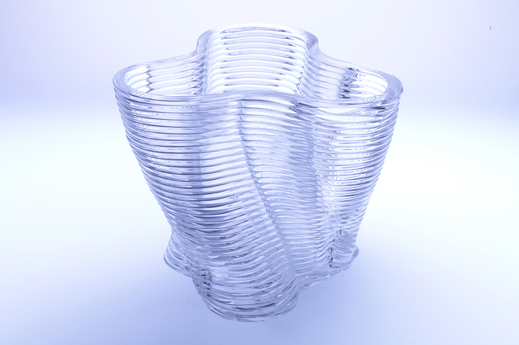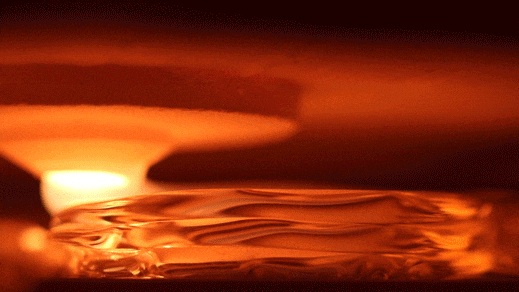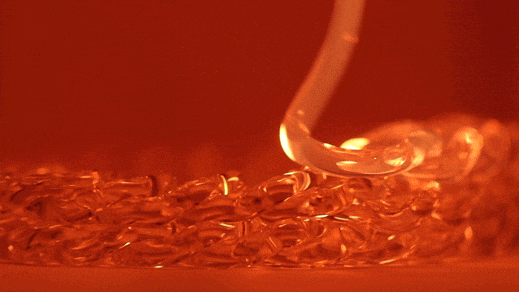3-D Printing Breaks the Glass Barrier
The palette of materials that can be used as 3-D printing “ink” is quickly growing in diversity, but one ubiquitous material has, until now, been absent: transparent glass.

It’s already possible to use tiny granules of glass in a powder bed with conventional 3-D printing techniques like jetting and sintering, but the products turn out opaque. Now researchers at MIT have demonstrated the first-ever machine that can print molten glass through a nozzle and make transparent glass objects layer by layer according to digital instructions.
The most challenging aspect of printing glass is that it must happen at extremely high temperatures. To flow well enough to be extruded through a nozzle, the material must be kept at a temperature greater than 1000 °C.
To achieve this, the printer needs separate heating systems for each stage of the manufacturing process. The molten glass ink is housed in a crucible above the nozzle, where heating coils maintain the desired temperature. The glass flows from the crucible into a custom nozzle, where separate heating coils keep it hot enough to flow and without sticking to the inside. Finally, objects are built inside a third heating chamber, which is kept just above the temperature at which the glass turns solid. This allows the printed objects to be cooled in a gradual, controlled way so that they don’t break.

Finding a nozzle suitable for printing glass was a complicated task, according to Peter Houk, head of MIT’s Glass Lab. To work it must be made of a material that can both handle high temperatures and resist the glass sticking to it. “At these elevated temperatures almost everything wants to stick to glass,” says Houk. Platinum nozzles are used in industry for some glass manufacturing processes, but are very expensive. Instead the group settled on a custom-made nozzle made of aluminum oxide.
The machine prints soda lime glass, a family of glasses used in everything from water glasses to windows. But glasses like Pyrex could in principle be printed this way too, albeit at much higher temperatures.

Houk says he and his colleagues are still working to understand the design constraints imposed by the printer, including the angles at which it’s possible to print and still maintain structural integrity, and the turning radius of the motorized printing apparatus. The group is also working to better understand the mechanical and optical characteristics of the printed objects.
The GIFs in this article were taken from this video, courtesy of the MIT Media Lab.
Keep Reading
Most Popular
Large language models can do jaw-dropping things. But nobody knows exactly why.
And that's a problem. Figuring it out is one of the biggest scientific puzzles of our time and a crucial step towards controlling more powerful future models.
The problem with plug-in hybrids? Their drivers.
Plug-in hybrids are often sold as a transition to EVs, but new data from Europe shows we’re still underestimating the emissions they produce.
Google DeepMind’s new generative model makes Super Mario–like games from scratch
Genie learns how to control games by watching hours and hours of video. It could help train next-gen robots too.
How scientists traced a mysterious covid case back to six toilets
When wastewater surveillance turns into a hunt for a single infected individual, the ethics get tricky.
Stay connected
Get the latest updates from
MIT Technology Review
Discover special offers, top stories, upcoming events, and more.